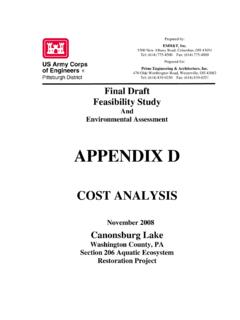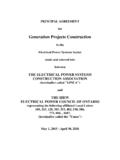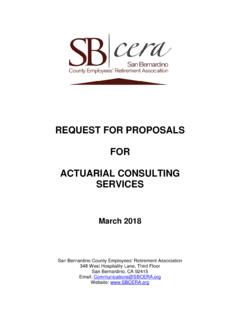Transcription of Gilmanton, New Hampshire
1 gilmanton , New HampshireGilmanton, New HampshireGilmanton, New HampshireGilmanton, New Hampshire Natural Resources InventoryNatural Resources InventoryNatural Resources InventoryNatural Resources Inventory SeptemberSeptemberSeptemberSeptember, 2004, 2004, 2004, 2004 gilmanton Conservation CommissionGilmanton Conservation CommissionGilmanton Conservation CommissionGilmanton Conservation Commission PO Box 550PO Box 550PO Box 550PO Box 550 gilmanton NH 03237 gilmanton , New HampshireGilmanton, New HampshireGilmanton, New HampshireGilmanton, New Hampshire Natural Resources InventoryNatural Resources InventoryNatural Resources InventoryNatural Resources Inventory Prepared by:Prepared by:Prepared by:Prepared by: gilmanton Conservation CommGilmanton Conservation CommGilmanton Conservation CommGilmanton Conservation Commissionissionissionission PO Box 550PO Box 550PO Box 550PO Box 550 gilmanton NH 03237 gilmanton NH 03237 gilmanton NH 03237 gilmanton NH 03237 SeptemberSeptemberSeptemberSeptember, 2004, 2004, 2004, 2004 TABLE OF CONTENTS Page PROJECT SUMMARY/INTRODUCTION.
2 1 TOPOGRAPHY .. 1 Steep Slopes .. 2 Ecological Regions .. 2 Land Cover .. 3 SOILS .. 3 Belknap County Soils Maps .. 4 Soils Recommendations .. 4 WATER RESOURCES .. 5 Watersheds .. 5 Lakes and Ponds .. 6 Rivers and Streams .. 8 Water Resource Recommendations .. 9 WETLANDS .. 9 Significant Wetlands .. 11 Wetland Buffers .. 12 Wetland Recommendations .. 13 VERNAL POOLS .. 14 Vernal Pool Recommendations .. 15 GROUNDWATER AND DRINKING WATER .. 16 Aquifers and Aquifer Recharge .. 16 Public Water Supplies .. 17 Contamination Sources .. 17 Impervious Surfaces .. 18 Groundwater and Drinking Water Recommendations .. 18 AGRICULTURAL RESOURCES .. 19 Farms .. 19 Agricultural Soils .. 21 Agriculture Recommendations .. 23 FOREST RESOURCES .. 24 Forest Cover .. 24 Forestry .. 25 Forest Soils .. 26 TOWN FORESTS .. 27 Management Plans .. 27 Goals and Priorities.
3 28 Survey Results .. 28 Town Forest Recommendations .. 30 NATURAL COMMUNITIES .. 30 PLANT COMMUNITIES .. 31 Rare/Imperiled Species .. 31 Invasive Species .. 32 BENEFICIAL INSECTS .. 36 WILDLIFE HABITAT .. 38 Unfragmented Open Space .. 38 Species of Concern .. 40 Significant Habitats .. 42 Fisheries .. 44 Wildlife Recommendations .. 45 RECREATIONAL TRAILS .. 45 Trail Recommendations .. 46 SCENIC RESOURCES .. 47 Regional Scenic Resources .. 49 PROTECTED LANDS .. 50 Current Use .. 53 LAND PROTECTION RECOMMENDATIONS .. 53 SUMMARY AND CONCLUSIONS .. 54 TABLES Table 1: gilmanton Land 3 Table 2: gilmanton s Great 6 Table 3: gilmanton s Named Rivers and 8 Table 4: National Wetland Inventory Wetlands in 11 Table 5: Residential Building Permits in 11 Table 6: gilmanton s Large Wetlands and Wetland 12 Table 7: Riparian Buffer 13 Table 8: gilmanton s Sand and Gravel 16 Table 9: Commercial Farms in 20 Table 10: Residents Using Land for Non-Commercial Agricultural 21 Table 11: Prime Farmland Soils in Belknap and Merrimack 22 Table 12: Forest Land 25 Table 13: Timber 25 Table 14: New Hampshire Forest Soils 27 Table 15: gilmanton s Town 27 Table 16: Historic Records of Rare Species in 32 Table 17: Beneficial 36 Table 18: Unfragmented Open Space Blocks in gilmanton Over 500 39 Table 19: Unfragmented Block Requirements Per 40 Table 20: Bird Species Observed in 41 Table 21: Mammal Species Observed in 42 Table 22.
4 Reptile Species Observed in 42 Table 23: Fisheries in 44 Table 24: Roads That Have Made a 46 Table 25: Conservation Lands and Town 52 Table 26: Current Use in 53 ACKNOWLEDGEMENTS APPENDICES Appendix A: Comprehensive Shoreland Protection Act Appendix B: Prime Wetlands Designation Appendix C: Drinking Water Source Assessment Report Appendix D: Potential and Existing Sources of Groundwater Contamination Appendix E: Local Resource Protection Priorities Appendix F: Resources Appendix G: Map Notes and Data Sources MAPS Figure 1: Base Map Figure 2: Topography Map Figure 3: Land Cover Map Figure 4: Surface Water Features Map Figure 5: Drinking Water Resources Map Figure 6: Unfragmented Lands Map Figure 7: Conservation Lands Map Figure 8: Constraints Natural Resources Inventory gilmanton NH September, 2004 1/54 PROJECT SUMMARY/INTRODUCTION gilmanton is a large, rural town with a population of 3,400 covering 38,127 acres in central New Hampshire .
5 It is located in Belknap County south of Lake Winnipesaukee. Its diverse topography in combination with the many lakes, streams, forests, and farms provides a high quality of life for gilmanton residents and excellent habitat for native plants and animals. This natural resource inventory is a description and analysis of the significant natural resources found in the town of gilmanton . It covers water, wildlife, forest, natural communities, agricultural, and soil resources. It also lists lands in gilmanton that have been permanently conserved to protect their natural resources for the benefit of future generations. This information is intended to be a resource for landowners, town officials, and citizens who are the long-term stewards of gilmanton s natural resources. Specifically, it can be used to: Educate and promote awareness about gilmanton s natural resources; Document current conditions so changes over time can be assessed; Develop land conservation priorities and a plan for gilmanton ; Provide a basis for master planning, ordinance revisions and planning New Hampshire s population is increasing more rapidly than any other state in the Northeast.
6 gilmanton , along with the other towns in the state, must accept the challenge of conserving significant resources in the face of increasing development and population pressures. This report should provide the community with a sound foundation upon which land use decisions can be based. A Natural Resources Inventory is never finished as the availability of new data and new mapping capabilities make it necessary to update the inventory periodically. An important missing part of this inventory is soils data. This is because revised Natural Resources Conservation Service (NRCS) soil maps for Belknap County have not been completed and digitized. Additional maps for the inventory should be made once this soils data is available. In addition, the information contained in this report will be more useful to community decision makers when digitized tax parcel information becomes available. Information in this inventory was compiled from many sources.
7 References and acknowledgements are found at the end of this report. Citizen input was gathered at a series of public meetings sponsored by the Planning Board and Conservation Commission in 1999, 2000 and 2001. A newspaper article in late 2001 solicited citizen input regarding scenic resources and a survey in the spring of 2003 was used to collect information about the resident s opinions regarding the town forests. A survey was distributed at the 2004 Town Meeting asking residents to share their knowledge of valuable natural resources within the Town. 1 Stone, Amanda , Natural Resources Inventories, a Guide for New Hampshire Communities and Conservation Groups, UNH Cooperative Extension, Durham, NH, 2001. Natural Resources Inventory gilmanton NH September, 2004 2/54 TOPOGRAPHY Topography is diverse and the town ranges from approximately 550 feet in elevation at Rocky Pond up to 1945 feet on Mt. Mack in the Belknap Mountains.
8 In general the terrain is more rolling near the Loudon Town line and more rugged closer to the Belknap Mountain range in the northern portion of the Town. Figure 2 is a map showing topography in shades of green and steep slopes in shades of red. The rolling terrain near the Loudon town line can be seen visually as the contour lines are further apart. Similarly, the contour lines are closer together in the more rugged and steep areas of the Belknap Mountain Range. This map shows a continuous corridor of higher elevation land stretching from Pancake Hill in the southeast, to Frisky Hill, to Peaked Hill, and to Grant Hill. This series of high elevation lands continues into the Belknaps and includes Durrell Mountain, Whiteface Mountain, Swett Mountain and Mount Mack. These lands make a significant contribution to many of the scenic views in the Town. Approximately 45% of gilmanton is over 900 feet in elevation. Steep Slopes Slopes in excess of 25% should not be built upon especially where soils are thin or highly erodible.
9 In addition, road access is very difficult where slopes are so steep. Most of gilmanton s steepest slopes are located near mountain peaks and along the sides of ridges, with the highest frequency near the Belknap Mountains in the northern end of the Town. These slopes are shown on the Topography Map in Figure 2 and on Figure 8, the Constraints Map. The Constraints Map shows areas of the Town that are not appropriate for development. In addition to steep slopes, wetlands, surface waters, conservation lands and paved areas are included. Approximately 5% of the Town has slopes in excess of 25%. Ecological Regions Like the rest of New England, gilmanton was shaped by glaciation. The motion of the glacier moved large amounts of rock and soil materials and smoothed the topography giving a more rounded appearance to the topography. However, the glacier also left us with coarse, stony and often infertile soils. By combining knowledge of the physical environment with what is known of the distribution of plants and animals, the Forest Service has divided New Hampshire into the following three principal biophysical or ecological regions or sections: Southern New England Coastal Plain and Hills Section (southeastern part of NH); Vermont-New Hampshire Upland Section (southwestern part of NH); White Mountain Section (Northern part of NH).
10 gilmanton is located in the Southern New England Coastal Plain and Hills Section which can be further divided into three subsections: Gulf of Maine Coastal Lowland (immediate coastal region); Natural Resources Inventory gilmanton NH September, 2004 3/54 Gulf of Maine Coastal Plain (southern portion); Sebago-Ossipee Hills and Plain (northern portion). gilmanton is in the Sebago-Ossipee Hills and Plain, a subsection characterized by more rugged topography. Mountains, hills and ridges of glacial outwash, large wetland complexes and large natural lakes distinguish this subsection. Land Cover Figure 3 is a Land Cover or Land Use map for gilmanton . The data on this map is from the 2001 New Hampshire Land Cover Assessment which is based on LANDSAT satellite imagery. This data is accurate to within approximately acres. A detailed explanation of the methodology behind this data can be found in New Hampshire Land Cover Assessment Final Report; Complex Systems Research Center, UNH, January, 2002.











